Stir-fried and simmered in sweet soy seasoning, Kinpira Gobo is a traditional Japanese dish of shredded burdock root and carrot with a hint of sesame. This crunchy and savory root vegetable is a great make-ahead side dish for your bento lunch or busy weeknight dinner.
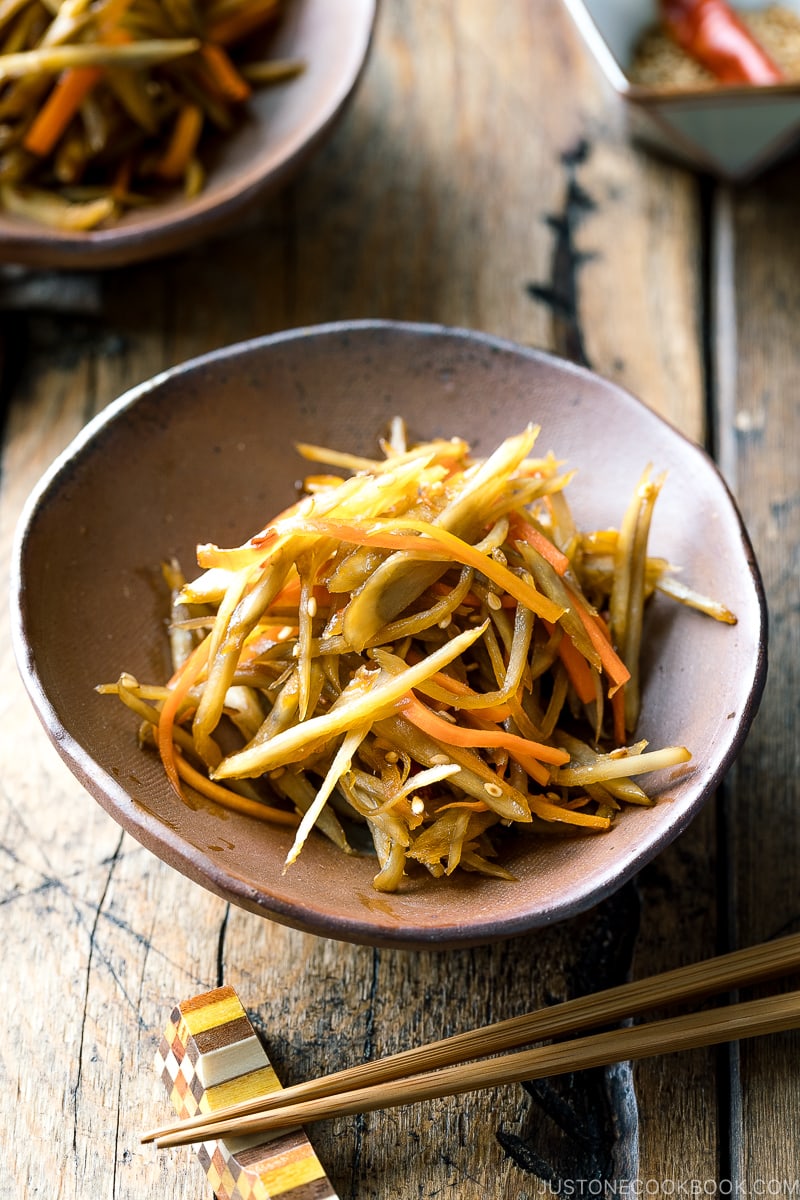
Kinpira Gobo (金平牛蒡, きんぴらごぼう) is a classic Japanese side made with gobo burdock root. This humble dish appears frequently in home-cooked meals as it cooks in a flash and can be made ahead of time.
You might not be familiar with the name, but chances are you may have seen it served in the corner of a bento lunch box or at a Japanese-style breakfast buffet during your trip to Japan.
The root vegetables give a nice crunchy texture as you enjoy the sweet and savory flavors. When I make Kinpira Gobo at home, I usually make a lot, saving some for the week (lasts 5-7 days!) in the refrigerator and some for the future in the freezer.
What is Kinpira Gobo
Kinpira Gobo is made with thinly shredded burdock root (gobo), sometimes mixed with another root vegetable like carrot, stir-fried in a frying pan, and seasoned with sweet and savory soy sauce.
Kinpira refers to a cooking style where you first stir fry the ingredients and then simmer them with sugar and soy sauce until the sauce dries out. The most common vegetables used for Kinpira is the combination of gobo and carrot, but lotus root (renkon) is also another popular choice (here’s my Kinpira Renkon recipe).
What is Gobo – A Delicious Root Vegetable
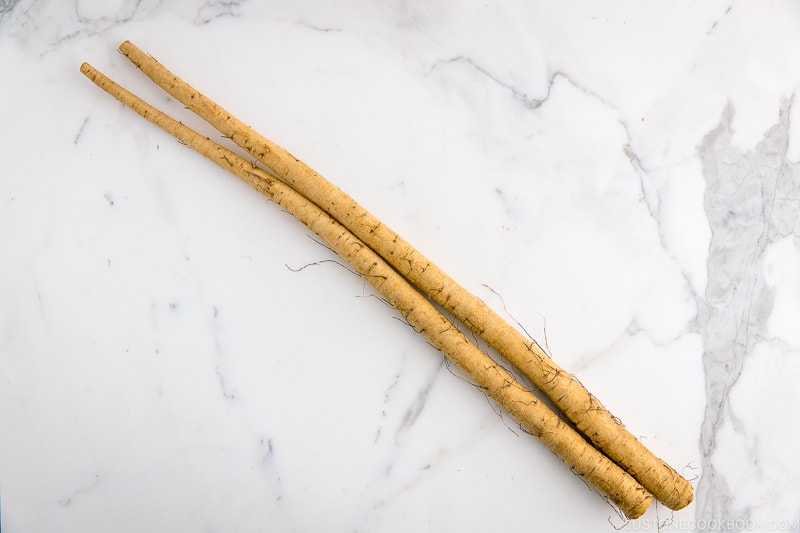
Gobo or burdock root is an edible root vegetable that is very popular in Japan. It has known to be a powerhouse of antioxidants and for its many health-promoting properties. The stalk is long, roughly 20-28 inches (50-70 cm) and weighs about 5 oz (150 gram) and sometimes more.
It stays crunchy even after cooking for a long time, giving a good mouth/facial exercise while you enjoy the unique earthy flavor.
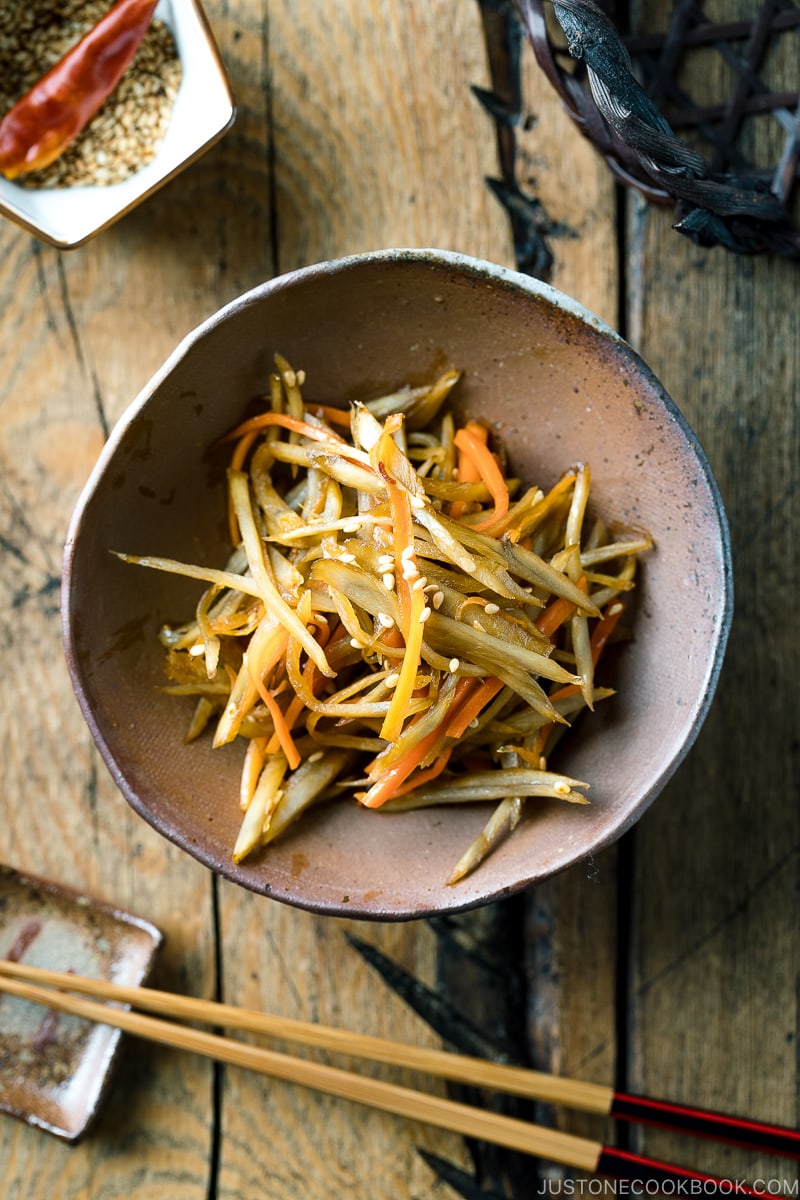
How to Cook Kinpira Gobo
Ingredients You’ll Need
- Gobo (burdock root)
- Carrot
- Sesame oil
- Sugar
- Mirin
- Sake
- Soy sauce
- Dried red chili (optional, often includes small amount)
- Sesame seeds
Cooking with Sesame Oil
Kinpira is always cooked with sesame oil to give an extra nutty, deep flavor. If you’re not a fan of sesame oil, you can use regular cooking oil.
Spicing Up with Dried Red Chili
Dried red chili pepper (赤唐辛子) is often added to the dish, but it’s optional as the spicy ingredient is still new to the Japanese palate. The chili seeds are almost always discarded.
3 Easy Cooking Steps
- Cut gobo and carrot into julienned strips. It’s a bit tedious but I always think it’s a good practice to cut vegetables. The more you practice, the faster and more precise your cutting technique will be.
- Stir-fry gobo first, until the texture is close to raw carrot texture. Add carrot and cook until both are equally tender.
- Add seasonings and simmer until the liquid dries out.
Helpful Cooking Tips
- Cut gobo and carrot in similar shapes – Both gobo and carrot should be julienned into thin strips, roughly 2 inches (5 cm) in length.
- Soak gobo in water – It’s important to get rid of the astringency of the root vegetable and prevent it from discoloration. Change water at least once.
- Use a larger pan to stir fry – It’s easier to stir/toss gobo.
- Let cool completely– If you are making the dish ahead of time (meal prepping), let it cool completely before storing it in the refrigerator or the freezer.
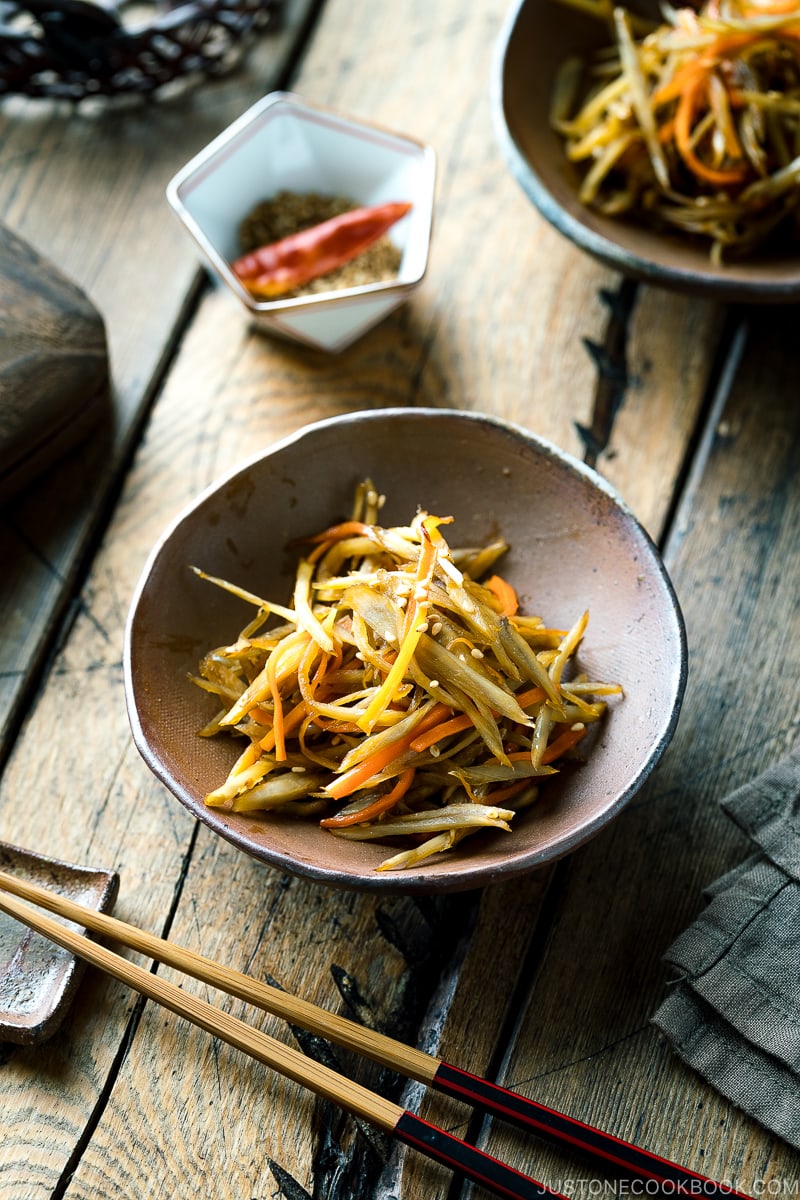
What to Serve with Kinpira Gobo
Along with steamed rice and miso soup, you can serve this simple vegetable side together with another protein as part of the ‘Ichiju Sansai’ Japanese meal. Here are my suggestions:
- Grilled Mackerel
- Simmered Beef with Ginger
- Garlic Miso Chicken Wings
- Simmered Kiriboshi Daikon
- Green Bean Gomaae
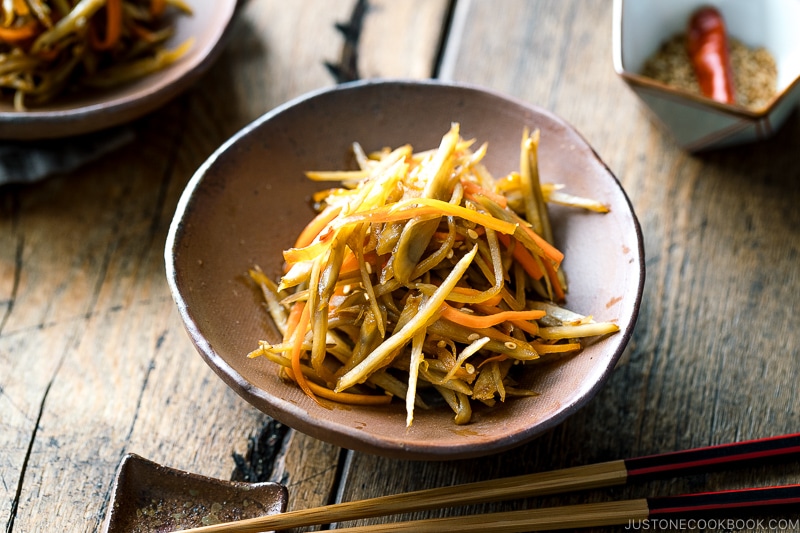
Wish to learn more about Japanese cooking? Sign up for our free newsletter to receive cooking tips & recipe updates! And stay in touch with me on Facebook, Pinterest, YouTube, and Instagram.
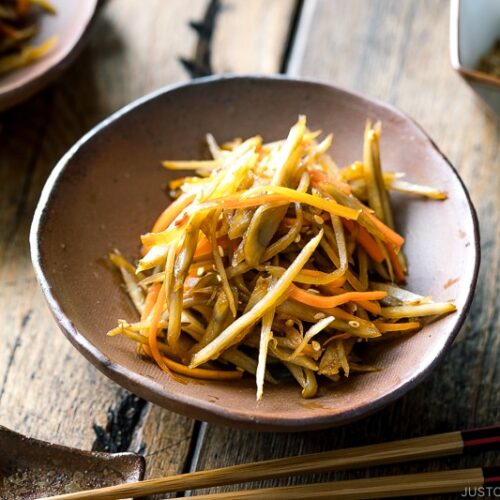
Kinpira Gobo (Braised Burdock Root)
Video
Ingredients
- 1 gobo (burdock root) (9.5 oz, 270 g)
- ⅓ carrot (2.5 oz, 70 g)
- 1½ Tbsp toasted sesame oil
For the Seasonings
For the Garnish
Instructions
- Gather all the ingredients. I recommend measuring the seasonings ahead of time, combining the sake, mirin, and soy sauce in one bowl.

To Prepare the Vegetables
- Try to select a burdock root without dark rings, which is the sign of an old gobo. Unfortunately, I don‘t always find the freshest gobo from local grocery stores (see the image below). Use the back of a knife to scrape off the skin of 1 gobo (burdock root). The gobo‘s flavor is right under the skin and you don‘t want to remove that with a vegetable peeler.

- Next, thinly slice the gobo diagonally, about 2 inches (5 cm) long per slice. Then, stack a few slices at a time and cut them into thin julienne strips. Tip: Thinner strips will cook faster.

- Soak the gobo strips in water for 10 minutes, changing the water halfway. After 10 minutes, rinse them under cold water and drain well.

- Meanwhile, peel and cut ⅓ carrot into thin 2-inch (5-cm) slabs. Then, cut them into thin julienne strips.

- Cut off the stem end of 1 dried red chili pepper and shake it to remove the seeds. Then, cut into thin rounds. If you want to make it spicy, add the seeds. In Japanese cooking, we usually discard the seeds.

To Cook the Ingredients
- Heat a large frying pan over medium heat. When it‘s hot, 1½ Tbsp toasted sesame oil. Then, add the gobo.

- Stir-fry until almost tender, roughly 2–3 minutes. If your gobo pieces are thicker, stir-fry for longer or optionally add ¾ cup Dashi or Vegan Dashi and simmer the gobo. When the gobo is 50–60% cooked through, add the carrot.

- Continue to stir-fry until both vegetables are tender.

- To the pan, add 1 Tbsp sugar, 1 Tbsp sake, 1 Tbsp mirin, and 1½ Tbsp soy sauce.

- When the vegetables are coated well with the seasoning, add the chili pepper (optional). Cook until the liquid evaporates.

- Sprinkle 2 tsp toasted white sesame seeds and quickly toss all together. Serve the dish into individual bowls or a large bowl/plate.

To Store
- You can keep the leftovers in an airtight container and store in the refrigerator for 3–4 days or in the freezer for a month.
Nutrition
Editor’s Note: This post was originally published on January 5, 2012. The recipe has been updated in April 2021 and new images and the video are added in May 2021.
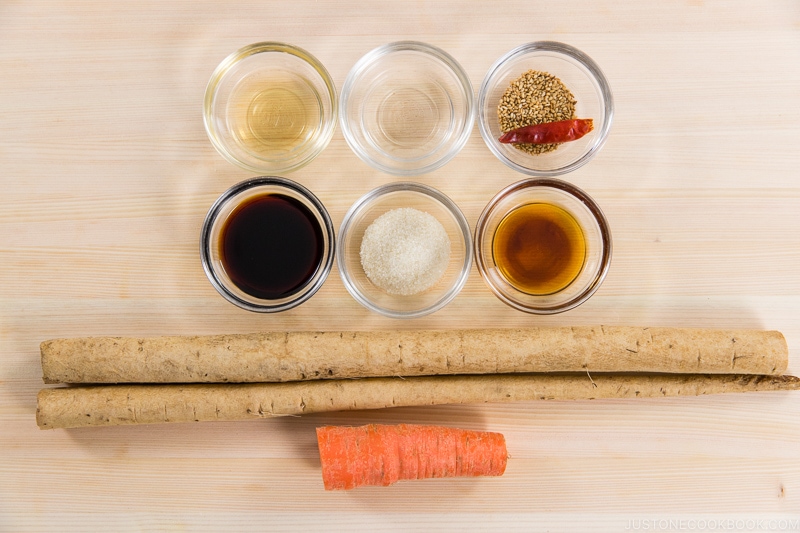
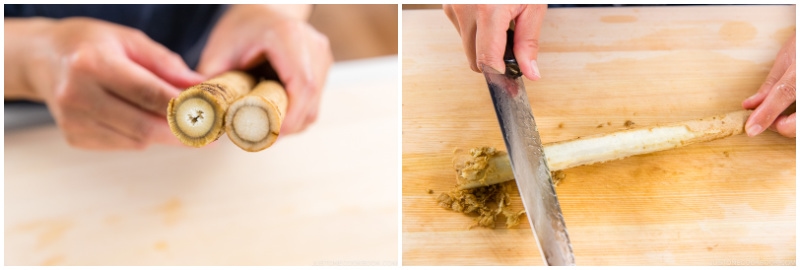
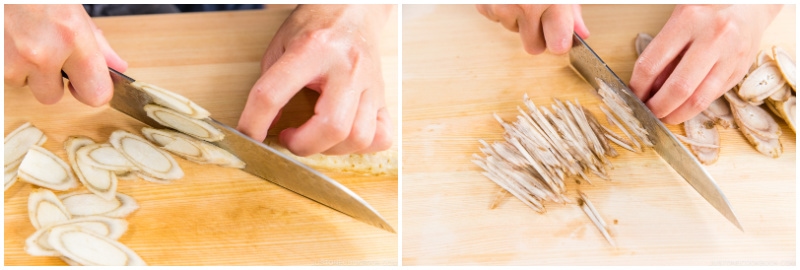
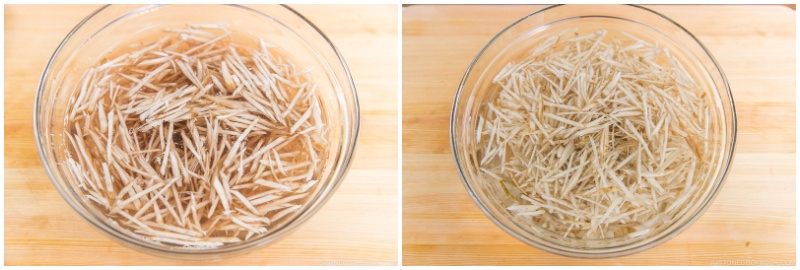
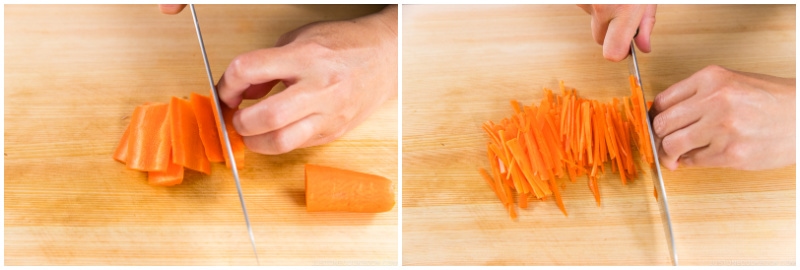
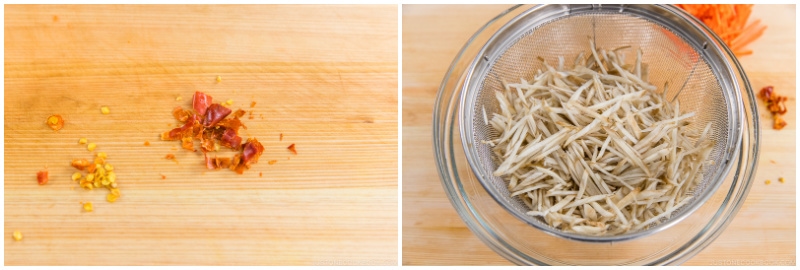
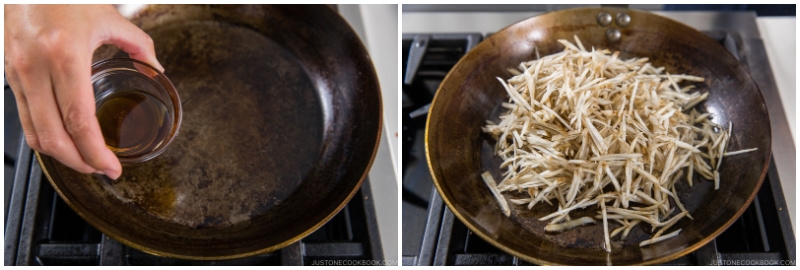
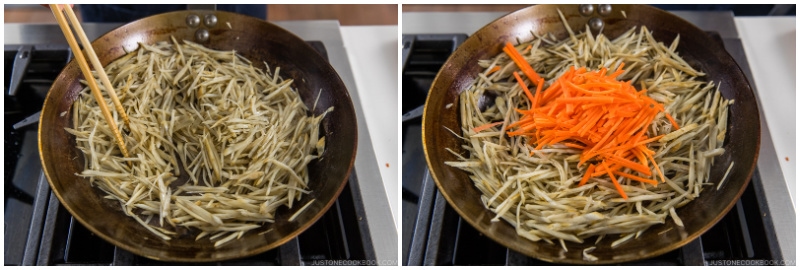
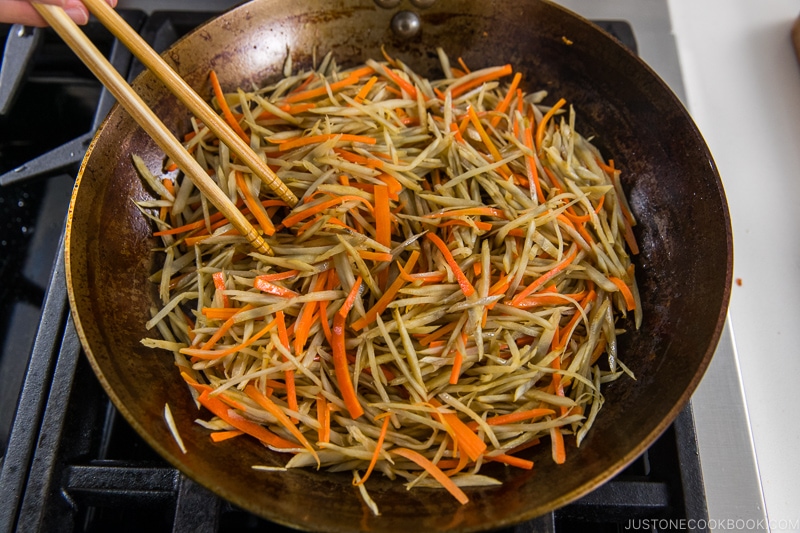
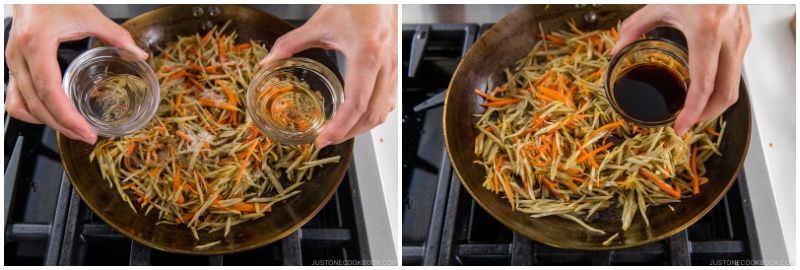
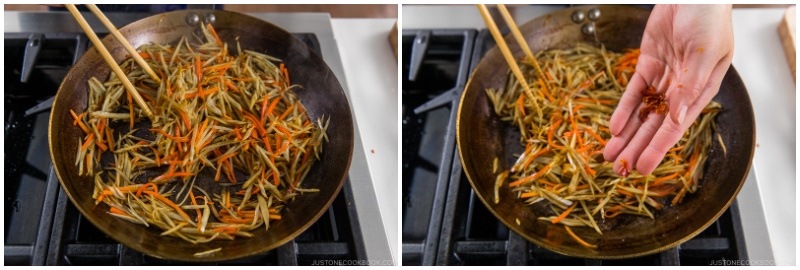
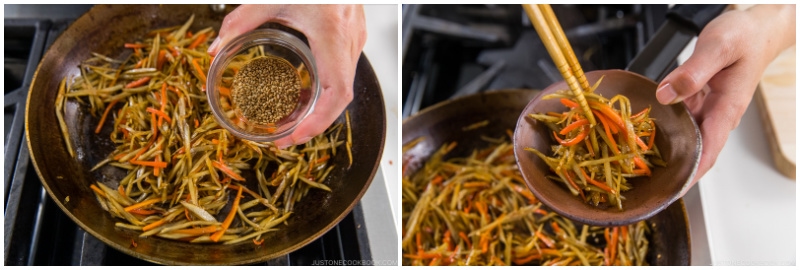










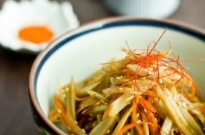
Big fan of your recipes! I made this one with carrot and daikon and it’s great, this sort of stir fried vegetable recipes have been getting me into healthy and tasty ways to quickly cook veggies 🙂
As someone who recently moved out on my own to a different country, I will admit this blog + buying a cheap rice cooker has been helping me get through life (and made me feel better about eating rice 1-3 times per day, which some people here find unusual lol), so I thought I would leave an appreciative comment!
Just one question – I live in a small-medium German city and despite checking the Asian markets around me often, I seem unable to find gobo 🙁 Though I did almost buy a yam that looked extremely similar, lol (I almost considered asking the Japanese restaurant near me where they source it). The only way I could find it was in a herbal tea shop, where they sell it dried (I guess for making tea, Germans love their “healing” herbal teas). I suppose it would not work as you want a tender root, but I know some vegetables (and mushrooms of course!) can be reconstituted after soaking in water for hours. It’s a long shot, but do you think that rehydrating it and cooking it in a similar way as here would work?
Thank you so much for sharing your recipes!!
Hello, Lily. We’re glad to hear you enjoy Nami’s recipes! Thank you so much for your kind feedback.
Regarding dried Gobo, we’re not sure which forms of Gobo you have in your tea shops, but it may work! In Japan, dried Gobo is sliced into thin julienne strips that may be soaked in hot water and used to make Kinpira, miso soup, mixed rice, and many other dishes! We’re hoping that this method also works for the tea shop’s Gobo.
If you try it, please let us know how it goes! 😃
I found it a little sweet so next time I would reduce the sugar by a bit. Otherwise, very authentic tasting and would use this recipe again 🙂
Hi Sara! Thank you so much for trying Nami’s recipe!
We are so happy to hear you will make this dish again. Yay!😊
Thank you Nami, this recipe was yummy! I added some wood ear fungus too. This was my 1st time cooking gobo. Always wanted to try it.
Hi Dee, Aww.🥰 Nami and all of us at JOC are so happy to hear you enjoyed Gobo.
Thank you so much for trying Nami’s recipe and sharing your experience with us.
Happy Cooking!
Burdock root is completely new to me; thank you for the introduction to such a tasty vegetable dish! I have tendinitis in my wrist so delicate knife work like julienne is painful for me. I wanted to give a tip for anyone with a similar situation…. OXO makes a julienne peeler that significantly reduces your prep time. The pieces are nice and thin and therefore cook quickly; the only downside is because the pieces are all so uniform, some food aesthetes may not like the appearance. It looks bit more “manufactured” compared to nice random knife cuts.
Hi Teppi! Thank you so much for trying Nami’s recipe and sharing your tip with us.
We are glad to hear it worked out well for you and that you enjoyed the Kinpira Gobo!
Happy Cooking!
Thank you for this recipe. My spouse is Japanese and he was impressed that I had made it, and was also impressed with the taste, so I guess I did it right! Thank you!
Hi Tatami53! Awesome! We are so happy to hear it turned out well!
Thank you very much for trying Nami’s recipe and sharing your story with us.☺️
I love dish and have used your recipe successfully for years. This last time when I prepped the gobo it was slimy and it kept its sticky texture after cooking. Why? Typically I can’t get a very fresh gobo, but this seemed a very fresh root. Help please.
Hi Daian! Thank you very much for using Nami’s recipe for years!
We are glad to hear you enjoy Kinpira!
The sticky texture could be from the sugar got caramelized. Do you think you cooked longer this time or used a different type of sugar or Mirin from last time?
I’m wondering if it’s possible you picked up an Asian yam rather than a gobo root? The thinner darker skinned variety does look kind of similar to gobo (the main difference is that the yams are usually less tapered and have a slightly smoother skin) and they’re sold in the same section of an Asian shop, so could easily be confused! The yams have a very slimy sticky texture.
I tried making this for the first time today and the burdock root has a delicious flavor! It takes a while to cook but it’s worth it. Thank you for the awesome recipe!
Hi Leilani! Nami and JOC team are so happy to hear you enjoyed Kinpira Gobo!
Thank you very much for trying Nami’s recipe and for your kind feedback.💞
Hi there 🙂 Can I ask what other vegetables we can make kinpira with? Thank you!
Hi Yvonne, Thank you very much for reading Nami’s post and trying her recipe!
You can use Renkon, carrot, daikon, bell pepper, etc.
Here is Nami’s recipe using Renkon; https://www.justonecookbook.com/kinpira-renkon-lotus-root/
We hope this helps!😃
Hi! I love your recipes and always make them with my boyfriend! Would there be any chance that you could make the precious version of the recipe for kinpira gobo available (the one that included dashi)? We really loved it but we didn’t save it before it was updated in April 🙁
Hi Renata! Thank you very much for reading Nami’s post and trying many of her recipes!
The old version of this recipe was including the Dashi. Nami had added the note on this recipe as another option on step 2 for you.🙂
Please add ¾ cup dashi and let gobo simmer.
We hope this helps!
Thank you!! <3
My bachan made this dish for her youngest daughter’s husband. Though my mother made this dish also for us. I’ve always liked Kimpira Gobo. My bachan taught me this dish. At church my bachan was known as the best cook among the women.
There are 2 differences from your recipe 1st she didn’t use seseme oil to cook in though she was plentiful with the seeds. The 2nd was she would fry the whole chili in vegetable oil until browned before taking it out & adding the gobo. &, of course, it was without measuring. Frying that chili gave just enough spice & flavor to the gobo without blowing off anyone’s head.
My guess is that your recipe is more
spicier then my grandmother’s. Yes, I like my dishes mildly spicy. I will stick with hers. I haven’t made years. Seeing your article has giving a craving for this dish. I plan to make again in the near future. Thanks for the memories.
Hi Janet! Thank you very much for reading Nami’s post!
They are many ways to make the Kinpira Gobo, and we are 100% sure your Bachan’s recipe tastes great too!😋 Thank you for sharing your Bachan’s recipe!
Happy Cooking!
Hi, I made this recipe this week. The instructions you posted were very good.
I was not so much impressed with the taste, however. Perhaps I got some older burdock because the texture was slightly woodsy, sort of like mature asparagus, if you know what I mean. I was surprised how bland it tasted. I ended up adding some gochujang. I have to say, however, that I am glad that I tried it out. Many thanks and keep those recipes coming.
Hi Ernst-Udo Peters! Thank you very much for trying Nami’s recipe!
Yes, good quality ingredients would make a dish taste different, but we are glad to hear you could arrange the flavor and enjoy the dish!
Thank you for sharing your cooking experience with us!
Hi Nami,
I really enjoyed this recipe when it included the dashi mix. Can you tell me how much dashi to include?
Thank you,
Hi Sam, Thank you very much for trying Nami’s recipe!
You can add ¼ cup of dashi and let gobo simmer. We hope this helps!
I would love to try this side dish. The health benefits of the burdock root are amazing. I think it would be great with my salads during the week, however, I need to make it sugar free. I can use Stevia for the sugar but the Mirin is sweet as well. Do you have any suggestions?
Hi Jennifer! Thank you very much for reading Nami’s post!
Nami doesn’t use stevia, but you can make this recipe with stevia and skip sugar and mirin.
The mirin taste won’t be the same, but we usually suggest substitute mirin with sake or water and sugar. The ratio of sake (or water) and sugar are 3 to 1, so you may want to try the balance for stevia.
We hope this helps!
Jennifer, I also love burdock and often just roast it in the oven with other veggies, or add it with brown rice so it cooks with it. 🙂 For this recipe, for savory, I’d not even worry about making it sweet since carrot adds sweetness already, if I were trying to make it sugar free, I’d do sesame oil, soy sauce, rice vinegar, and maybe some ginger if you want. 🙂